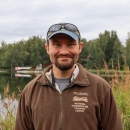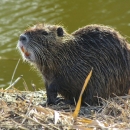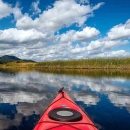The U.S. Fish and Wildlife Service (Service) Alaska Region is working with partners to implement a region-wide integrated pest management (IPM) strategy for terrestrial invasive plants, focused on managing small-scale infestations detected on Service lands and at critical access points off Service lands (e.g., trailheads, boat launches, airstrips, road corridors, waterways, private allotments), in accordance with the National Invasive Species Act, the National Wildlife Refuge System Administration Act, the National Wildlife Refuge System Improvement Act (which amended the National Wildlife Refuge System Administration Act), the Endangered Species Act (ESA), Executive Orders 13112 and 13751, and the Service’s IPM policy 569 FW 1 (USFWS 2010(a)). The legal definition of the IPM is “a sustainable approach to managing pests by combining biological, cultural, physical, and chemical tools in a way that minimizes economic, health, and environmental risks” (7 USC § 136r-1). The purpose of this approach is to implement a consistent, feasible, and cost-effective IPM strategy for terrestrial invasive plants across the Region.
Publication date
Type of document
Report
Facility
Program
FWS and DOI Region(s)







